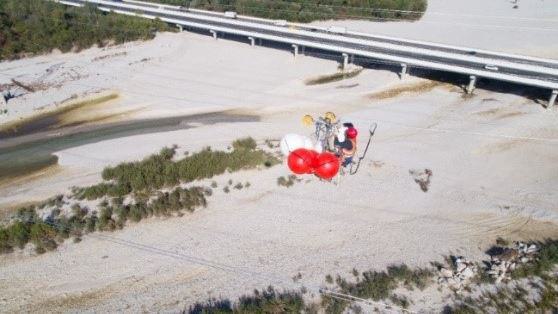The sustainability of electricity infrastructure is essential for the grid’s development and management. In terms of environmental impact, the critical aspect for any electricity transmission operator (TSO) is not so much the use of natural resources or emission of pollutants, but rather the physical presence of power lines and electrical substations and their interaction with the surrounding natural or urban environment. Protecting biodiversity and ecosystems is therefore paramount for anyone managing the grid.

Collision risk? According to the network of NGOs and network operators, greater data sharing is needed at European level.

In this regard, leading European TSOs like Terna and various non-government organisations have conducted in-depth analyses that constantly monitor bird migrations so as to address the problem, inter alia, of avifauna colliding with electricity power lines. In particular, Terna was one of the forerunners with its Messina Straits’ project: having monitored the passage of more than 100,000 birds over more than three years along the migratory route between Africa and Europe, by collecting significant data that is now available to the scientific community, with the aim of demonstrating that electricity infrastructure does not interfere with the passage of avifauna in the area.
During May, the NGO network and RGI (Renewables Grid Initiative) grid operators presented a report on the Better utilisation and transparency of bird data collected by TSOs. Prepared in conjunction with the British Trust for Ornithology (BTO), the Royal Society for the Protection of Birds (RSPB) and contribution from European TSOs, the study highlighted the general effort being made to collect data, in order to better understand the phenomenon of collisions. According to experts however, the phenomenon cannot count on solid scientific measurements: the data collected at European level and reported by the Renewables Grid Initiative is fragmented and not standardised.

Terna is fully compliant with the best European standards referring to data collection that assesses any environmental impact before initiating electricity works. We are nonetheless leaders in Europe in so far as experiments are concerned relating to the operational stage, which are conducted using radar and Bird strike indicators (measuring bird collisions), and in terms of sharing avifauna monitoring data. There is still scope for improvement on setting up monitoring and formalising the below-the-line data collected.
Luca Moiana, Terna environmentalist
In cases where those involved in the works agree to make significant use of data to achieve the common objective of reducing bird mortalities, many of them report on the lack of time and resources available to invest in shared projects.
This underlies the RGI appeal for certain basic steps aimed at improving sharing: from methodology guidelines for the collection of data to the sharing of results on tests measuring the effectiveness of deterrents, extending to a study on the structure of the data that is currently being collected, with the objective of making it more standard.
"Terna is fully compliant with the best European standards referring to data collection that assesses any environmental impact before initiating electricity works, underlined environmentalist Luca Moiana that works with the Italian transmission grid operator’s environmental engineering team. We are leaders in so far as experiments are concerned relating to the operational stage, which are conducted using radar and Bird strike indicators (measuring bird collisions), and in terms of sharing avifauna monitoring data. There is still scope for improvement on setting up monitoring and formalising the below-the-line data collected”.